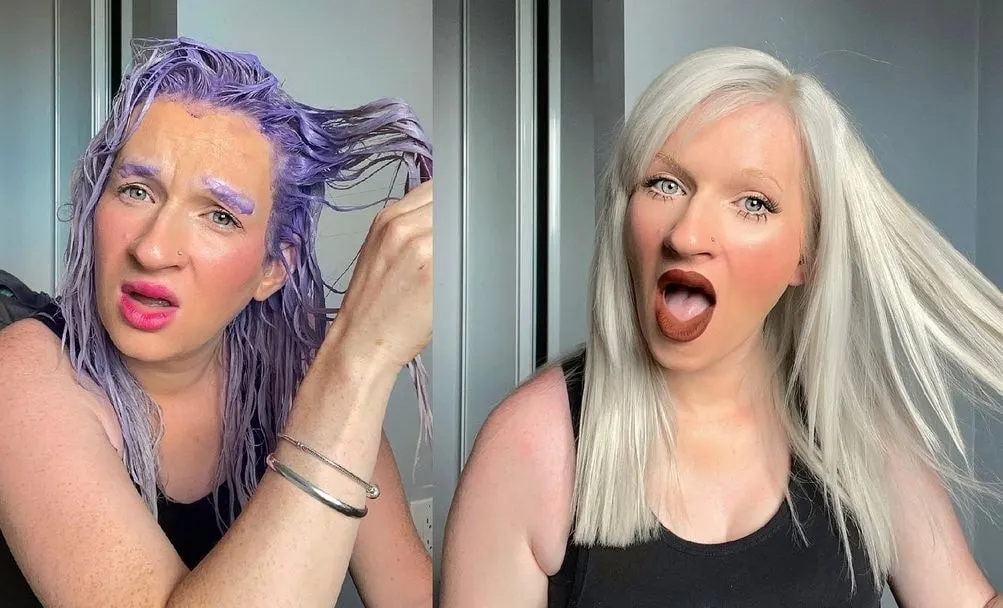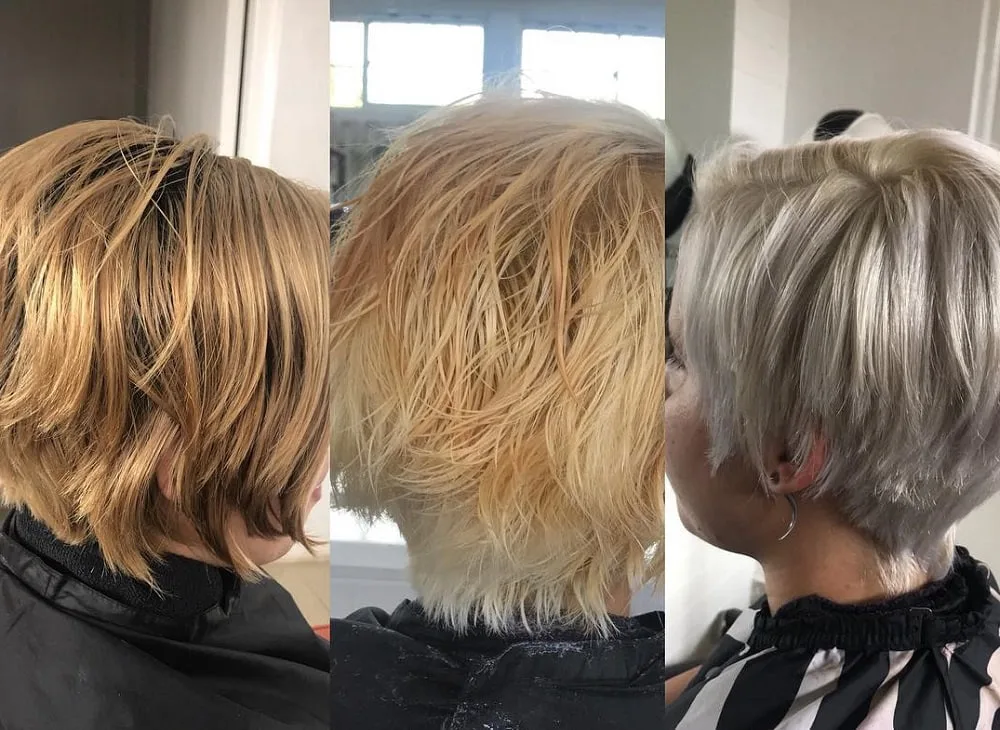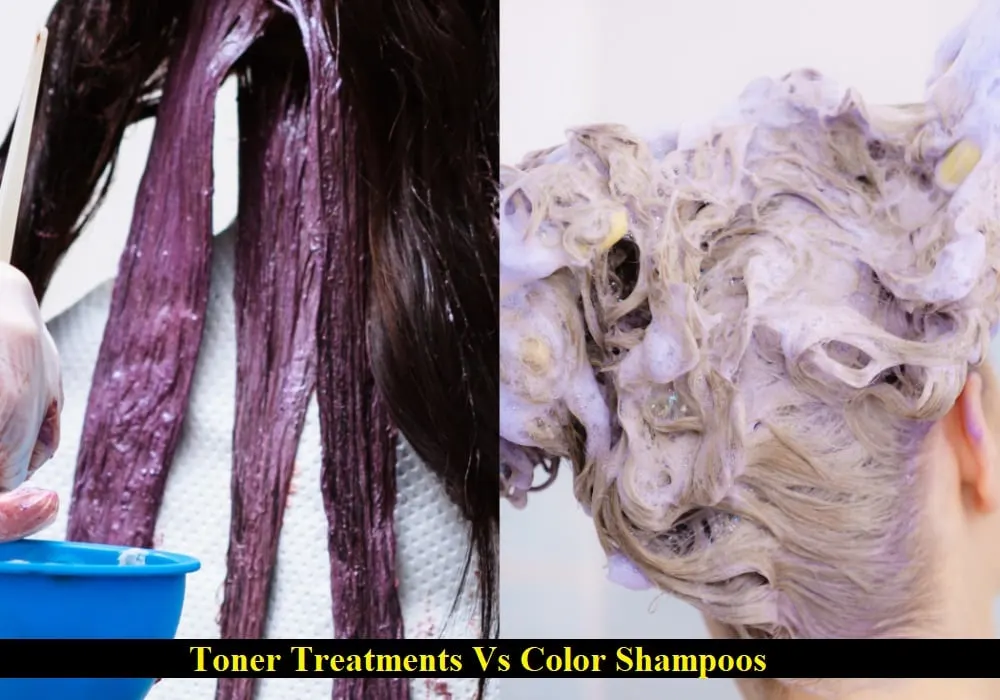Wella T18 Toner is one of Wella’s lightest toner shades, perfect for toning yellows out of a light ash blonde color.
Wella recommends using a 20-volume developer with their T18 toner, but if you have a different-volume developer, like a 30-volume or 40-volume developer, you might wonder if you can use that instead.
Can You Use Wella T18 Toner With a 30-Volume Developer?
No, you can not use a 30-volume developer with T18 toner. If you do, it’ll destroy the base color because of it’s lightening strength. So, you should only use the recommended 20-volume developer.
Wella T18 toner recommends using a 20-volume developer. They recommend using two parts 20 volume developer to one part Wella T18 toner, mixing, and applying for up to 30 minutes.
You should always follow a manufacturer’s recommendations about which strength of developer to use when dying, toning, or bleaching your hair.
Using a developer that isn’t the recommended strength with toner can create unexpected results, the wrong color, or damage your hair follicles.
You should never leave the toner on longer than the manufacturer recommends, as you may get the wrong color or damage your hair.
What Happens if You Use a 30-Volume Developer with T18 Toner?

If you use a 30-volume developer with permanent color, you can lift your base hair color three shades lighter while applying it.
The color will also set in better with a low-volume developer such as 20 vol.
Can I Dilute 30-Vol and 40-Vol Developer to 20-Vol Developer and Use It With T18 Toner?
Absolutely. You can turn a 30-volume developer (a 9% solution) into a 20-volume developer (a 6% solution) by mixing a 30-volume developer with water or conditioner at a 2:1 ratio.
A 40-volume developer can be turned into a 20-volume developer by mixing the 40-volume developer with water or conditioner at a 1:1 ratio.
Why Does Toner Need a Developer To Work?

A developer works by opening up the cuticles in hair strands, allowing for hair color, bleach, or toner to penetrate more deeply. Without a developer, toner would sit on top of the hair follicle and wouldn’t cause permanent change.
If you don’t use a developer when applying toner, the hair cuticle will stay sealed, and the toner will not penetrate your hair.
How To Use Toner With Developer
Now that you know that using Wella T18 toner with 30-volume developer is not recommended, let’s learn how to use a toner with a developer. Toner should be mixed with a developer at a ratio of two parts developer to one part toner unless the manufacturer recommends otherwise.
In most cases, when mixing toner with a developer, you will use a 30-volume developer. However, if you are toning darker hair, you may need a more potent developer, such as a 40-volume developer, to create more of an effect.
If you are toning light hair, such as blond or platinum hair, you will need to use 20 or 10-volume developers.
Once you have mixed your toner at the correct ratio, you should spread it all over your scalp. Leave the mixture on your hair for about thirty minutes before thoroughly washing it with shampoo and rinsing.
Which Neutralizing Toner Should I Use?
Various toners are available for different shades of unwanted pigmentation. Some toners will better neutralize certain colors, so choosing the right one is essential. But which neutralizing Wella toner should you use?
If you have underlying yellow pigment, which usually appears in lighter blonde, bleached hair, you should use a violet or purpose toner to neutralize the yellow tones.
If you have underlying orange or dark yellow tones in medium blond or light brown hair, you should neutralize those tones with a blue toner.
If you have red-orange or deep orange undertones in brown hair, you should use blue-green toner to neutralize unwanted undertones.
You should use a green toner if you have dark brown or black hair with dark red undertones.
Toner Treatments Versus Color Shampoos

Toner treatments are toners mixed with developers left on your hair for up to 30 minutes and rinsed off. The developer opens up your hair cuticle, allowing the toner to work immediately.
Color shampoos are a more gradual process. Purple shampoos can tone yellows in blonde hair, and blue shampoos can tone orange and red out of brown hair.
Color shampoos can take several weeks to produce results but tend to be gentler.
Toner treatments and color shampoos also work differently. Toner treatments open the cuticle and allow the color to enter the hair, while color shampoos deposit pigment on the strand.
Why Does Dyed Hair Need Toner?
When you dye your hair, the color might not come out exactly as you wanted it to or might not look natural. That’s where toner becomes useful.
Toner can brighten your hair color if it has become dull, or it can remove unwanted brassy tones. It will allow you to correct the hair color to a more desired one.
Why Does Bleached Hair Need Toner?
Bleached can turn orange instead of platinum, even if you follow the process correctly. This discoloration is because your natural dark pigments are the hardest to remove.
When you bleach your hair, the darker red and orange pigments can stick around longer than other pigments, so when you wash the bleach out, you get left with orange and red colors.
How Long Do I Leave in Toner T18 and Developer Mix on Hair?
T18 toner and developer should be left on your hair for up to 30 minutes. It can be left on for a shorter length of time if you only need a small amount of toning.
If you leave 30-volume developer in your hair too long, you may damage your hair.
Wrapping Up
Wella T18 toner with 30-volume developer is a no-no. You can, however, make a 20-volume developer from a 30-volume developer by mixing the 30-volume developer with water or conditioner.
Always follow the manufacturer’s directions when dying, toning, or bleaching hair. You should also choose the right kind of toner for your undertones for the best results.
